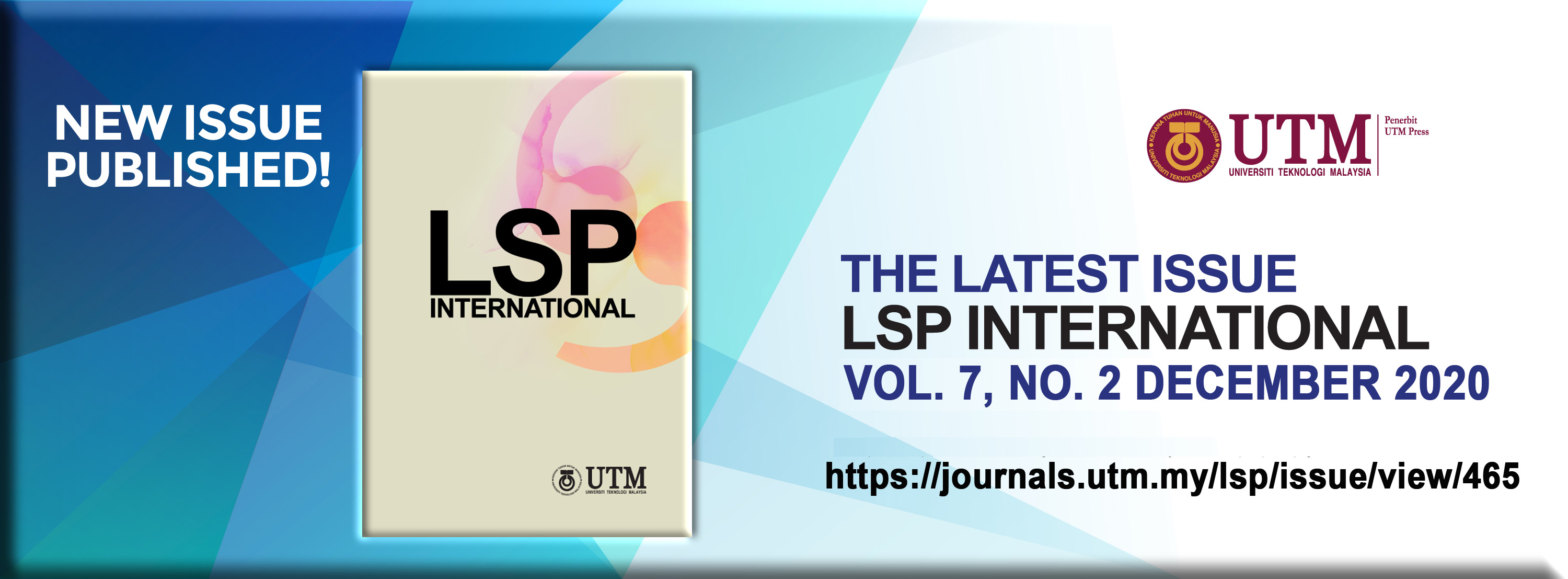The Presentation of Self and Identity Construction in Virtual World: A Case Study of Avakin Life
DOI:
https://doi.org/10.11113/lspi.v7.15271Abstract
Identity in the virtual world has become a point of interest for researchers. The virtual world has become a place where people go to interact and in turn create an identity for themselves. This study sets out to investigate identity construction in a 3D Virtual world game using Avakin Life as a case study. Going with Goffman’s theory of self-presentation, this study aims to understand why identities are created in the virtual world and how this identity is created. The process to achieving this is carried out through a review of previous literature on virtual world identity construction and an ethnographic research carried out in Avakin Life using observation and semi-structured interviews as a method for data collection. The data is analysed thematically, and the findings show that participants use the virtual world to create an extension of themselves while they achieve this creation by duplicating a piece of themselves through the use of their Avatars. This study therefore helps to add to the existing knowledge on identity and identity construction in the virtual world.
References
Amri, C., Tanduklangi, A., & Alberth, A. (2016). Integrating Virtual World into Project Based Learning Through Teaching and Learning Writing. Journal of Language Education and Educational Technology (JLEET), 1(2).
Animesh, A., Pinsonneault, A., Yang, S. B., & Oh, W. (2011). An odyssey into virtual worlds: Exploring the impacts of technological and spatial environments on intention to purchase virtual products. MIS Quarterly, 35(3), 789-810.
Antonacci, D., DiBartolo, S., Edwards, N., Fritch, K., McMullen, B. & Murch-Shafer, R. (2008) The Power of Virtual Worlds in Education: a second life primer and resource for exploring the potential of virtual worlds to impact teaching and learning. Angel Learning.
Bell, M. (2008). Toward a definition of ‘Virtual Worlds. Journal of Virtual Worlds Research, 1(1), 1-5.
Bargh, J.A., McKenna, K. & Fitzsimons, G.M. (2002) Can You See the Real Me? Activation and Expression of the ‘True Self’ on the Internet, Journal of Social Issues, 58(1), 33-48.
Bessière, K., Seay, A. F., & Kiesler, S. (2007). The ideal elf: Identity exploration in World of Warcraft. Cyberpsychology & behavior, 10(4), 530-535.
Braun, V., & Clarke, V. (2012). Thematic analysis. APA Handbook of Research Methods in Psychology, Vol. 2,P. 57-71.
Bullingham, L., & Vasconcelos, A. C. (2013). ‘The presentation of self in the online world’: Goffman and the study of online identities. Journal of information science, 39(1), 101-112.
Diehl, W. C., & Prins, E. (2008). Unintended outcomes in Second Life: Intercultural literacy and cultural identity in a virtual world. Language and intercultural communication, 8(2), 101-118.
Dionisio, J. D., Burns, W. G., & Gilbert, R. (2013). 3D Virtual worlds and the metaverse: Current status and future possibilities. ACM Computing Surveys(CSUR), 45(3), 34.
Donath, J.S. (1999). Identity and deception in the virtual community. In P.Kollock &M.Smith (Eds.), Communities in cyberspace (pp.29–59),London: Routledge
Ecenbarger, C. (2014). The impact of video games on identity construction. Pennsylvania Communication Annual, 70(3), 34-50.
Evans, S. (2016). Where is the virtual self? Virtual worlds and the self as a cyborg. Annual Review of Cyber Therapy and Telemedicine, 14(Summer), 51-57.
Goffman, E. (1959). The presentation of self in everyday life. New York: Doubleday
Heikoop, W. (2013). Blended identities: Identity work, equity and marginalization in blended learning. E-Learning and Digital Media, 10(1), 53-67.
Hogg, M. A., Terry, D. J., & White, K. M. (1995). A tale of two theories: A critical comparison of identity theory with social identity theory. Social psychology quarterly, 255-269.
Kafai, Y.B., Fields, D.A. & Cook, M.S. (2010) Your Second Selves: player-designed avatars, Games and Culture, 5(1), 23-42.
Kozinets, R. V. (2015). Netnography. The international encyclopedia of digital communication and society, 1-8.
Muhanna, A. M. (2015). Virtual reality and the CAVE: Taxonomy, interaction challenges and research directions. Journal of King Saud University - Computer and Information Sciences, 27(3), 344-361.
Parmentier, G., & Rolland, S. (2009). Consumers in virtual worlds: Identity building and consuming experience in Second Life. Recherche et Applications en Marketing (English Edition), 24(3), 43-55.
Ratan, R., & Hasler, B. S. (2010). Exploring self-presence in collaborative virtual teams. PsychNology Journal, 8(1), 11-31
Song, H., & Jung, J. (2015). Retracted: Antecedents and consequences of gender swapping in online games. Journal of Computer-Mediated Communication, 20(4), 434-449.
Turkle, S. (1994). Constructions and reconstructions of self in virtual reality: Playing in the MUDs. Mind, Culture, and Activity, 1(3), 158-167.
Turkle, S. (1995). Life on the Screen: identity in the age of the Internet. New York: Simon & Schuster.
Zein, F. (2017). Abbreviation Words Used in ‘Avakin Life 3d Virtual World’Online Game Chatting Room.




